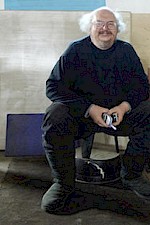New Loudspeaker Design Yields Deep Bass from Small Sealed-Cabinet
In the previous post, we talked about the design and acoustic advantages and challenges of vented vs. sealed-box enclosures. I also mentioned “…room-shaking bass – below 20 Hz – from a cabinet too small to have a vent or passive radiator required for a vented system.” In many ways, that is today’s Holy Grail – a speaker that can shake the room with bass and yet physically not intrude on that room. Too small? This may seem to contradict an advantage of vented systems –being able to have a smaller speaker system produce the same deep bass.
This new design is an exception – here is why.
To get loud, deep bass, a large volume of air must be moved during each cycle. For each octave of deeper bass, four times as much air must be moved to get the same sound level. In a sealed system, all this air is moved by the driver. The area of the cone and the maximum distance the cone can move, called “excursion,” determines the upper limit of the output of the system.
In a vented system, much of the deepest bass is produced by the vent. The vent is usually a tube (circular or rectangular in cross section). Since air in the tube can move much farther than driver cones can move, the vent can be smaller in area than the woofer. Still, the area of the vent has to be big enough to allow the large air volume to pass through the vent without creating disturbing extra noises, called “vent chuffing.” These noises can be like whistles or loud background noise on a phone. The Thiele/Small parameters make the design of these systems almost cook-book easy in the bass range. Since these designs use the vent/cabinet resonance for the lowest bass, as the cabinet volume is cut in half, the vent gets twice as long to keep the same resonant frequency. If you go for very deep bass from a very small cabinet, the vent required can become bigger than the cabinet! In this situation, a passive radiator (PR) is used. The PR is like a woofer without the magnet and voice coil. It has the mechanical limitations of the cone/surround/spider of a woofer. Since the PR is doing the work at the lowest frequencies, it typically needs to move three to four times as much air as the woofer in the system and may become too big fit in the cabinet; and it can often take up substantial cabinet space.
Subscribe to Ohm News & Views to get the latest posts in your inbox
A fairly popular configuration in very compact subwoofers is for the driver and PR each to have the same maximum displacement. The maximum output of such a design is half that of having both drivers being active in a sealed box over most of its range. Also, the amplifier has to be limited so the passive radiator does not distort at the lowest frequencies.
Phase linearity is another advantage of sealed systems. In the very deepest bass, the phase of the output in a sealed system stays the same as its mid-bass response. In a vented system, there is a phase shift. This is easily measured. Is it audible? That is a question for another time; but no one will argue that it is worse to have better measured performance.
The disadvantage of this style sealed system is giving up efficiency to get the same bass response. However, with the very high powered subwoofer amplifiers and drivers with very long excursion available today, we can create a speaker system yielding super-deep bass and enclose it in a small, sealed cabinet. It’s a synthesis that fits the needs of both music and lifestyle. At Ohm, we call this configuration XtremeXcursion tm and are using it in the New Ohm F series being developed.
Enjoy & Good Listening!
John
John Strohbeen Author
John Strohbeen was the President and Chief Engineer of Ohm Acoustics from 1978-2023.


